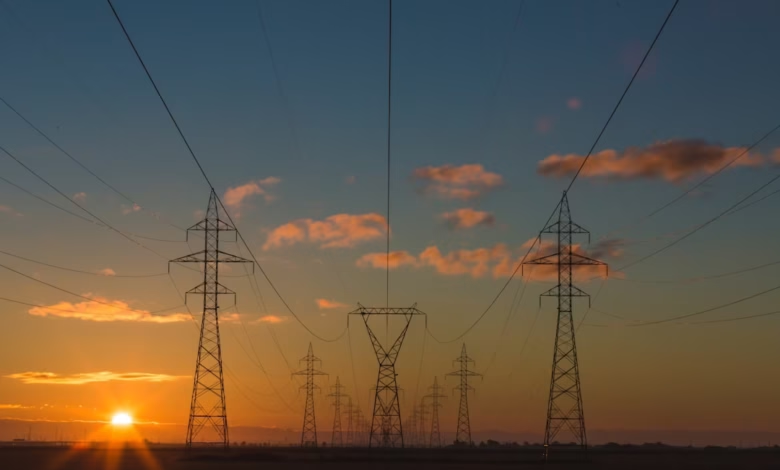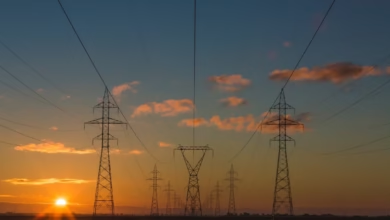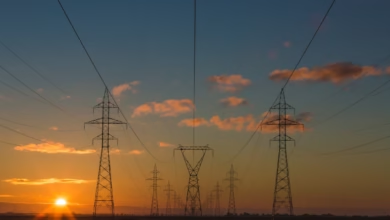Navigating the Future of Energy: The Role of Fossil Fuels and Renewables in Global Energy Markets and Innovations for a Sustainable Transition

In an era marked by growing concerns over climate change and the urgent need for energy security, the debate surrounding fossil fuels—oil, coal, and natural gas—has never been more critical. These traditional energy sources have dominated the global energy market for decades, powering economies and fueling development. However, as we navigate the complex landscape of energy consumption and production, understanding the role of fossil fuels becomes essential in the context of the ongoing energy transition. This article delves into the current state of fossil fuels, examining their production and consumption patterns while also exploring how they fit into a broader shift towards renewable energy sources like solar power, wind energy, and hydropower. Moreover, we will highlight innovations in energy efficiency, such as carbon capture technologies and smart grids, that are shaping energy policy and investment strategies. By analyzing global energy trends and the dynamics of energy markets, we aim to provide a comprehensive view of how fossil fuels coexist with emerging green energy solutions, ultimately influencing energy economics and paving the way for a sustainable future.
- 1. Understanding Fossil Fuels: Production and Consumption in the Global Energy Market
- 2. The Energy Transition: Balancing Fossil Fuels with Renewable Energy Sources
- 3. Innovations in Energy Efficiency: The Role of Carbon Capture and Smart Grids in Shaping Energy Policy
1. Understanding Fossil Fuels: Production and Consumption in the Global Energy Market
Fossil fuels, which include oil, coal, and natural gas, have been the cornerstone of the global energy market for over a century. Understanding their production and consumption is crucial in the context of current global energy trends, particularly as nations grapple with the need for energy security and the implications of climate change.
The production of fossil fuels is largely concentrated in specific regions across the globe, with countries like the United States, Saudi Arabia, and Russia leading the charge. These nations invest heavily in energy infrastructure, which not only includes extraction but also transportation and refining processes. The dynamics of energy markets are influenced by geopolitical factors, technological advancements, and shifts in energy policy that aim to balance fossil fuel reliance with a burgeoning demand for renewable energy sources.
Consumption patterns reveal a complex interplay between fossil fuels and emerging energy technologies. While fossil fuels currently dominate the global energy landscape, the rise of renewable energy—such as solar power, wind energy, and hydropower—presents a significant challenge to their long-term viability. The energy transition towards greener alternatives is being driven by innovations in energy efficiency, energy storage, and smart grids, which facilitate the integration of renewable sources into existing energy systems.
Moreover, fossil fuels are increasingly scrutinized due to their role in greenhouse gas emissions and the urgency of addressing climate change. This has led to the exploration of carbon capture technologies and the adoption of energy policies that promote sustainable practices. Energy investments are shifting towards low-carbon technologies, including nuclear energy and hydrogen energy, reflecting a growing recognition of the need for cleaner energy solutions.
As countries navigate this transition, they are also considering the economics of energy exports and imports. The fluctuating prices of fossil fuels affect global energy markets, prompting strategic investments in distributed energy solutions and thermal energy systems. Furthermore, the integration of electric vehicles into the transportation sector highlights the ongoing evolution of energy consumption patterns and the importance of energy R&D in creating sustainable pathways.
In conclusion, understanding the production and consumption of fossil fuels within the global energy market is essential for addressing the challenges of energy security and climate change. As the world moves towards a more sustainable energy future, the collaboration between fossil fuels and renewable energy will play a pivotal role in shaping energy policies and driving innovative solutions.
References:
U.S. Energy Information Administration. (2023). International Energy Outlook 2023. Retrieved from [EIA](https://www.eia.gov/outlooks/ieo/)
International Energy Agency. (2023). World Energy Outlook 2023. Retrieved from [IEA](https://www.iea.org/reports/world-energy-outlook-2023)
World Resources Institute. (2023). The Role of Fossil Fuels in the Energy Transition. Retrieved from [WRI](https://www.wri.org/research/role-fossil-fuels-energy-transition)
2. The Energy Transition: Balancing Fossil Fuels with Renewable Energy Sources
The world is currently experiencing an energy transition, a crucial shift towards balancing fossil fuels with renewable energy sources. This transition is driven by the urgent need to address climate change while ensuring energy security and economic stability. As global energy trends evolve, the reliance on fossil fuels such as oil, coal, and natural gas is being challenged by the rise of green energy alternatives, including solar power, wind energy, and hydropower.
The integration of renewable energy into the energy markets presents both opportunities and challenges. Policymakers are increasingly focusing on energy policy that promotes energy efficiency and encourages investments in renewable energy technologies. Energy innovations, such as smart grids and energy storage solutions, are vital for managing the intermittent nature of renewables, ensuring that energy supply meets demand consistently.
Furthermore, advancements in carbon capture technology are playing a significant role in mitigating the environmental impact of fossil fuels. By capturing carbon emissions from power plants and industrial processes, we can reduce their contribution to climate change while still utilizing existing thermal energy infrastructure. This approach not only enhances energy security but also supports the gradual transition to cleaner energy sources.
Distributed energy systems, including bioenergy and hydrogen energy, are emerging as essential components of the energy landscape. These systems can enhance energy resilience by localizing energy production and reducing dependence on centralized fossil fuel sources. Additionally, the growing interest in electric vehicles is driving the need for renewable energy to power transportation, further accelerating the energy transition.
As countries evaluate their energy imports and exports, the focus is shifting towards sustainable energy investments that align with climate goals. The future of energy economics will likely favor countries that embrace this transition, fostering innovation and collaboration across various sectors.
In conclusion, achieving a balanced energy transition requires a multifaceted approach, encompassing renewed investment in renewable energy, the development of smart energy systems, and a commitment to reducing carbon emissions. By navigating this complex landscape, we can pave the way for a sustainable energy future that meets the needs of both current and future generations.
3. Innovations in Energy Efficiency: The Role of Carbon Capture and Smart Grids in Shaping Energy Policy
As the world grapples with the impacts of climate change and the urgent need to transition to cleaner sources of energy, innovations in energy efficiency are becoming pivotal. Among these innovations, carbon capture technologies and smart grids are at the forefront, playing a critical role in shaping energy policy and enhancing energy security.
Carbon capture and storage (CCS) presents a promising solution for reducing greenhouse gas emissions from fossil fuel production and consumption. By capturing carbon dioxide emissions from power plants and industrial sources, CCS enables continued use of fossil fuels while mitigating their environmental impact. This technology not only supports the transition to renewable energy but also complements existing energy markets that rely on oil, coal, and natural gas. As countries strive for net-zero emissions, investments in CCS can significantly influence energy policy and promote a balanced energy portfolio that includes renewable energy sources like solar power, wind energy, and hydropower.
Smart grids represent another key innovation in energy efficiency. These advanced electrical grids utilize digital technology to monitor and manage the flow of electricity from various sources, including renewable energy and traditional fossil fuels. By enhancing energy transportation and distribution, smart grids facilitate the integration of distributed energy resources, such as solar panels and wind turbines, into the grid. This not only improves energy efficiency but also enhances the reliability of energy supply, making it essential for energy security.
The rise of electric vehicles (EVs) further underscores the need for smart grids and energy innovations. As more consumers transition to EVs, the demand for efficient energy storage and distribution will increase. Smart grids can optimize energy usage during peak times, reducing strain on the system and promoting a sustainable energy transition. Additionally, energy R&D in areas like hydrogen energy and bioenergy holds potential for diversifying energy sources and enhancing energy economics.
Overall, the integration of carbon capture technologies and smart grids serves as a vital strategy for shaping effective energy policy. By promoting energy efficiency and supporting the transition to greener energy alternatives, these innovations not only address climate change but also pave the way for a resilient and sustainable energy future. As global energy trends evolve, the focus on energy innovations will be crucial in balancing the reliance on fossil fuels with the pressing need for renewable energy solutions.
In conclusion, the intricate landscape of fossil fuels, encompassing oil, coal, and natural gas, plays a pivotal role in the current global energy markets. Understanding the dynamics of production and consumption is essential as we navigate the ongoing energy transition. The shift towards renewable energy sources, such as solar power, wind energy, and hydropower, highlights the need for a balanced approach that integrates fossil fuels with green energy alternatives. Innovations in energy efficiency, particularly through advancements in carbon capture and smart grids, are crucial for shaping effective energy policy and enhancing energy security.
As we face the realities of climate change and its implications for energy economics, the importance of energy investments in both traditional and renewable sectors cannot be overstated. The development of hydrogen energy, energy storage solutions, and distributed energy systems will play a significant role in ensuring a sustainable energy future. Moreover, the interplay between energy exports and imports will continue to influence global energy trends.
As we move forward, embracing energy innovations and fostering collaboration across various sectors will be key to achieving a resilient energy landscape that supports economic growth while addressing environmental concerns. By prioritizing research and development in energy technologies and promoting the integration of thermal energy and offshore energy, we can pave the way for a more sustainable and secure energy future. The journey towards a balanced energy ecosystem is challenging but essential for a cleaner, greener world.





